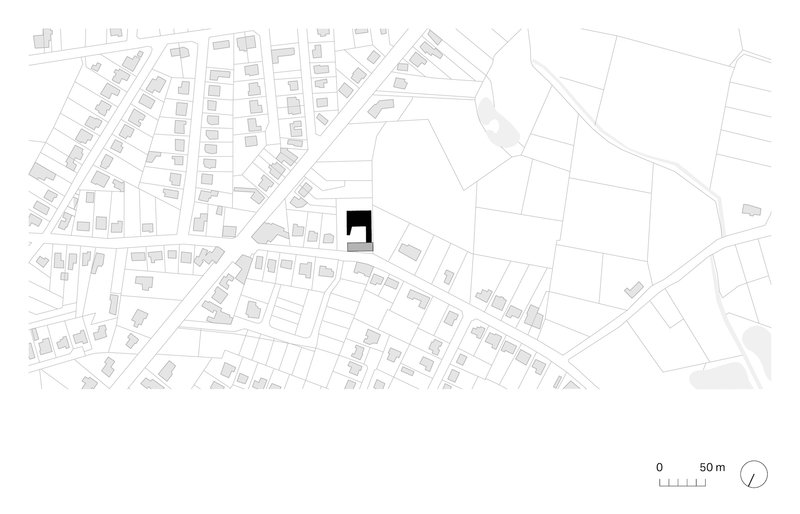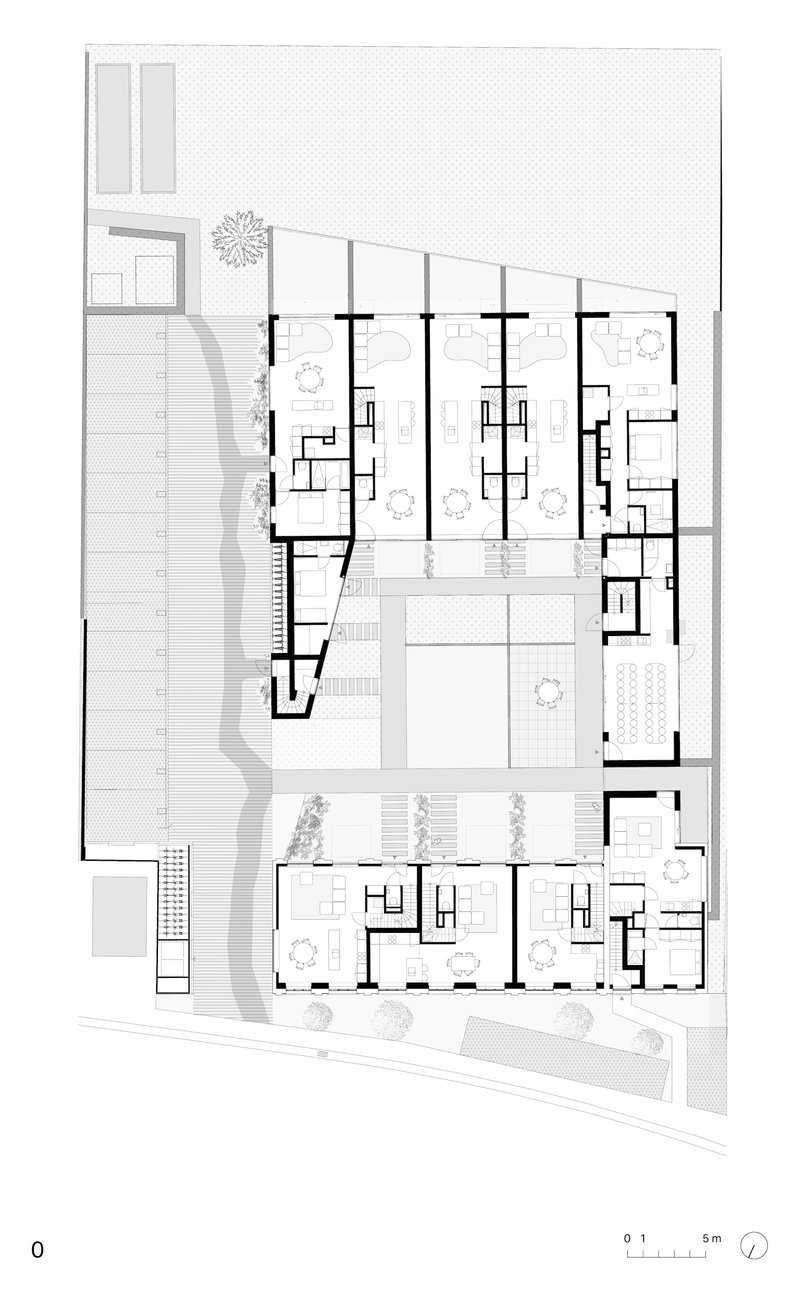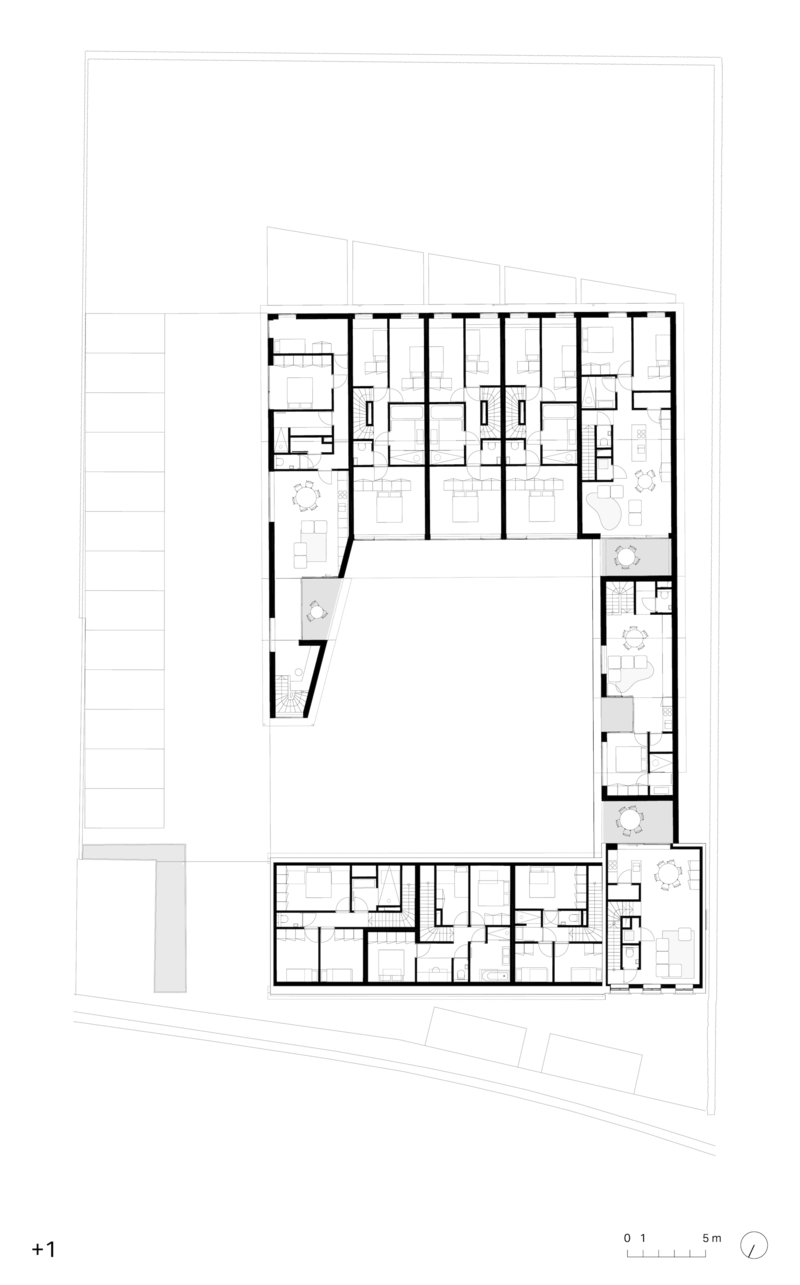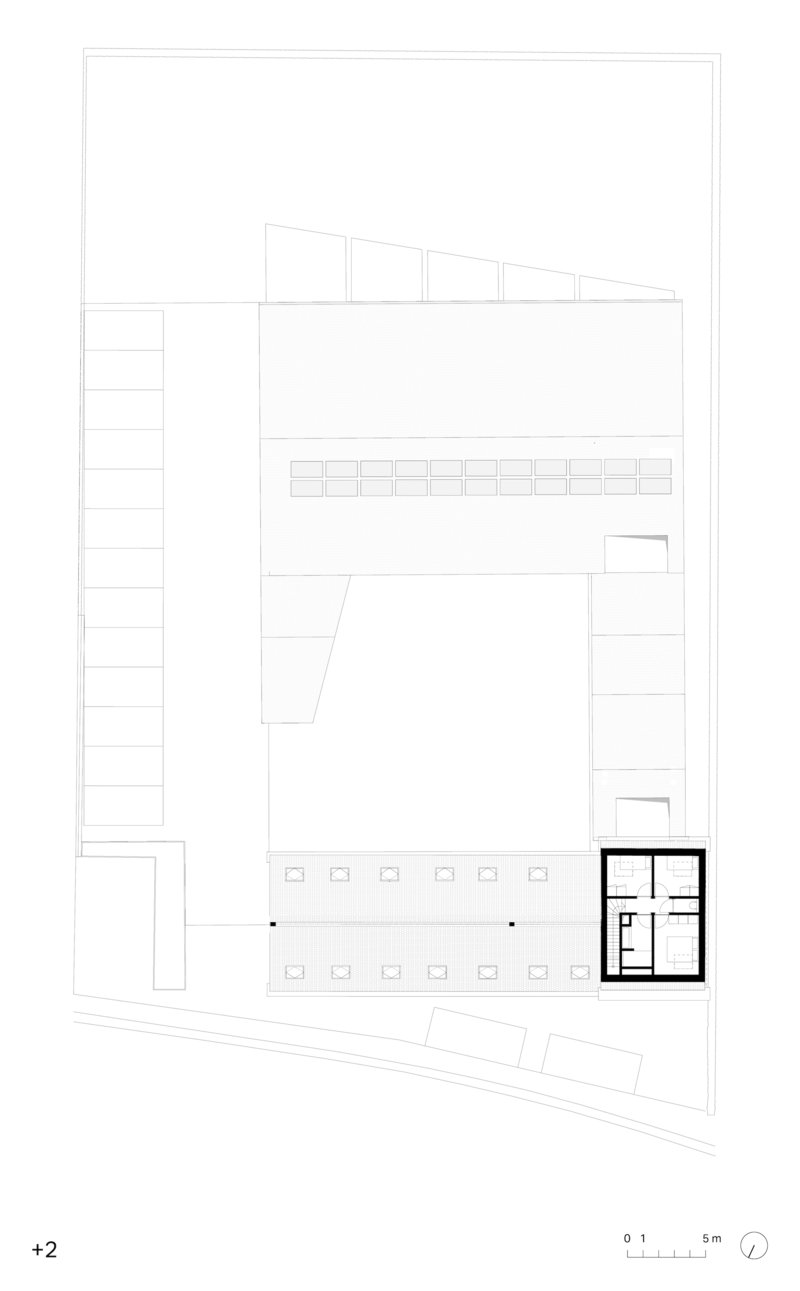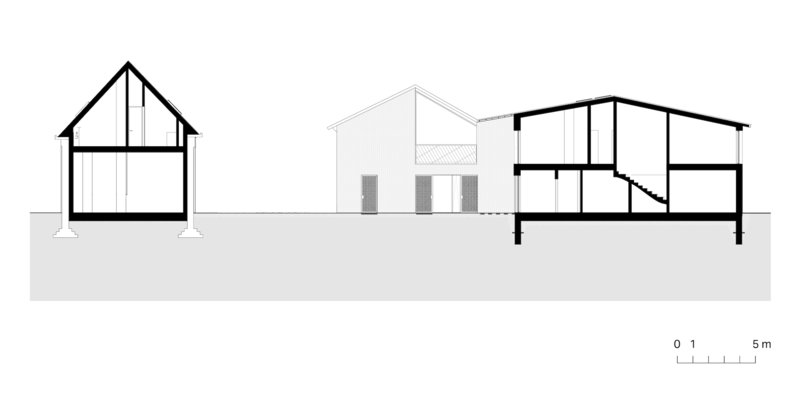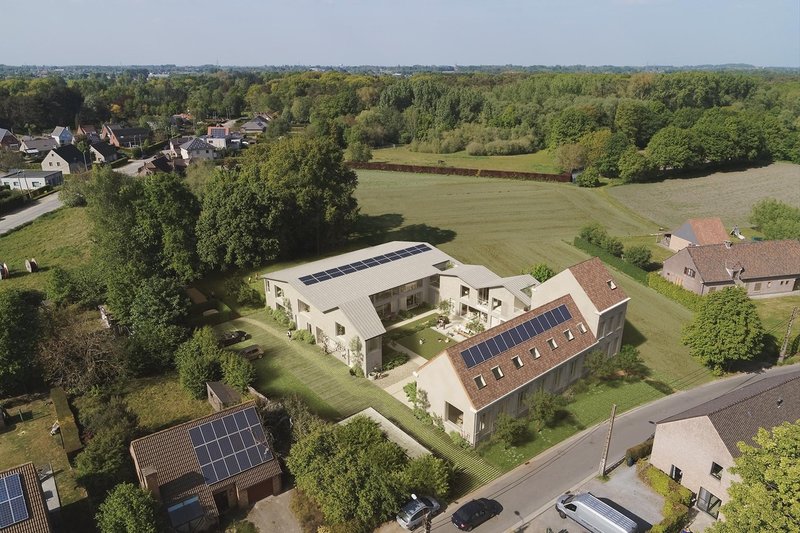Co-housing De Mart
Client:
EVP
Location:
Rijmenam
Realization:
2017 – …
Design team:
Tom Verschueren, David Driesen, Ruben Van den Hove, Lennart Visser, Kotryna Urbonaite, Kristof Van Parijs
Structural engineer:
Concreet
Size:
1580 m²
Co-housing project De Mart started for dmvA with an architectural competition in which a new function was sought for an old school in a rural area in Rijmenam. The small school campus from the late 19th century is transformed into a co-housing project with 13 living units. The original school building with headmaster’s house is partly preserved and converted into housing. A new L-shaped volume with houses and a communal space is added to the school wing. To create harmony the new building has saddle roof, analogous to the visuality of the school.
The addition of the L-shaped volume creates an inner area, the heart of the collective housing, referring to a courtyard farm. The yard connects all the residences with a loop-shaped path and provides some elements that encourage social interaction, such as a barbecue spot, a ping pong table… There is also a common room with a kitchen, a laundry room, and a sauna on the ground floor. On the first floor there is space that can be set up as a co-working place or as guestrooms. A large part of the site consists of open green space with allotment gardens, play zones, green parking spaces, a wadi and greenery that enhances biodiversity. Solar panels will provide electricity for the private homes and communal areas such as charging points for electric cars and bicycles.
When designing this project, dmvA’s aim was to create a living environment with a balance between the individual and the communal. It was important that the site has a participative atmosphere and a sense of community. The result is a combination of modern energy-efficient homes around a residential yard with the advantages of a collective space in a green environment. By integrating the old school building, the spirit of the former school campus and thus a part of the collective memory could be preserved.
When designing this project, dmvA’s aim was to create a living environment with a balance between the individual and the communal. It was important that the site has a participative atmosphere and a sense of community. The result is a combination of modern energy-efficient homes around a residential yard with the advantages of a collective space in a green environment. By integrating the old school building, the spirit of the former school campus and thus a part of the collective memory could be preserved.
